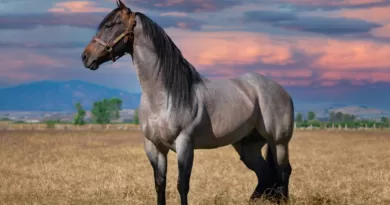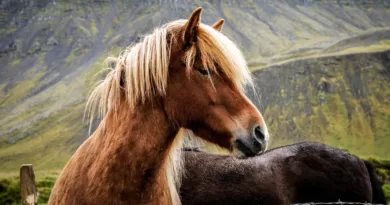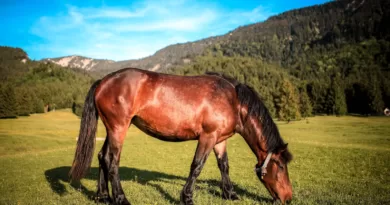What Is a Grade Horse
The Definition of a Grade Horse
A grade horse is defined as a horse that does not possess any official registration papers or pedigree. In other words, it is a horse whose lineage cannot be traced back to any specific breed. Grade horses are often the result of the crossbreeding of different horse breeds, resulting in a unique combination of characteristics and traits.
These horses are often referred to as “mutts” or “crossbreds” in the equine world. However, this term should not be mistaken for a lack of quality or ability. Grade horses can excel in various equestrian disciplines just like their purebred counterparts. They may not have the prestigious lineage or bloodlines of purebred horses, but they possess their own set of strengths and capabilities that make them valuable and versatile companions for riders of all skill levels.
The Origins and History of Grade Horses
Grade horses have a rich and diverse history that spans several centuries. The origins of the grade horse are deeply rooted in the early days of horse breeding when purebred horses were primarily used for agriculture, transportation, and warfare. However, as the need for versatility and adaptability increased, breeders started to introduce different horse breeds to create a more well-rounded and resilient type of horse. This led to the emergence of grade horses, which are a mix of various breeds and do not have a specific pedigree or registration.
Throughout history, grade horses have proved to be valuable assets in various ways. They were often used as working horses on farms, ranches, and in rural communities due to their hardiness and ability to perform a wide range of tasks. Their mixed breeding also made them suitable for long distances and challenging terrains, which made them highly sought after for transportation purposes. Additionally, grade horses played a significant role in the development of new breeds, as breeders carefully selected and crossed different horses to create more desirable traits in subsequent generations. With their humble beginnings as versatile workhorses, grade horses have left an indelible mark on the history of equine breeding and continue to be valued for their unique qualities today.
Characteristics and Traits of a Grade Horse
Grade horses are known for their versatility and adaptability, making them popular among equestrians. These horses typically display a range of characteristics and traits that make them suitable for various disciplines. One key trait of a grade horse is their durability. Often coming from mixed or unknown backgrounds, grade horses have developed resilience and toughness to withstand different conditions and demands.
Another notable characteristic of grade horses is their hardiness. Due to their diverse lineage, they possess a strong genetic foundation that enables them to handle physical exertion and challenging environments. This makes them well-suited for activities such as trail riding and ranch work. Additionally, grade horses often display a calm and even temperament, making them approachable and easy to handle. This quality makes them favored choices for riders of all skill levels, as they are typically reliable and steady in their behavior.
Differences Between a Grade Horse and a Purebred Horse
Purebred horses are those that come from a long line of ancestors from the same breed. These horses are bred selectively to preserve specific traits and characteristics that are desirable within the breed. As a result, purebred horses tend to have a more predictable temperament, physical attributes, and performance abilities. The purity of their bloodline ensures a certain level of consistency in their appearance and abilities.
On the other hand, grade horses have a mixed or unknown lineage, with no predominant breed or registered ancestry. They may be a combination of various breeds or have unknown parentage. Consequently, grade horses often exhibit more diverse physical characteristics and temperaments. Their traits may not follow any specific breed standards, making them unique and less predictable compared to purebred horses. These differences can make them well suited for various disciplines and tasks, as they may possess a combination of traits from different breeds.
The Benefits and Drawbacks of Owning a Grade Horse
Owning a grade horse comes with its fair share of benefits and drawbacks. One of the main advantages is the cost. Grade horses, which are mixed-breed horses with no registration papers, tend to be more affordable compared to their purebred counterparts. This makes them a great option for those looking to own a horse without breaking the bank. Additionally, grade horses often have a diverse genetic background, which can result in unique and interesting traits. This can make them versatile and well-suited for a variety of equestrian disciplines.
However, it’s important to consider the drawbacks of owning a grade horse as well. Since their breeding is unknown or not documented, there may be uncertainty regarding their health history or potential genetic issues. This lack of information can make it challenging to assess their suitability for certain activities or gauge their overall health. In addition, competing in specific breed show events or competitions may not be an option for grade horses, as these events typically require proof of purebred lineage. It’s important to weigh these factors carefully when considering whether a grade horse is the right choice for you.
How to Identify a Grade Horse
When identifying a grade horse, there are a few key characteristics to look for. First and foremost, grade horses do not possess any pedigree papers or registration with a specific breed association. This is because they are a mix of different breeds, resulting in a unique combination of traits. Grade horses can vary in size, color, and build, making them a versatile and diverse group. Additionally, they may exhibit a range of temperaments and abilities, depending on the breeds that make up their genetic background.
One way to identify a grade horse is to examine its physical features. Grade horses often display a variety of characteristics from the breeds that comprise their lineage. This can include body conformation, such as the shape of the head, neck, and body proportions. Additionally, they may have distinctive markings or color patterns that are associated with certain breeds. While each grade horse is individual and unique, these physical traits can help provide clues about their heritage. However, it is important to remember that appearances alone do not determine a horse’s breed or abilities, as other factors like training and environment also play significant roles.
Common Breeds and Types of Grade Horses
Grade horses come in a wide variety of breeds and types, showcasing the diversity within the grade horse population. One common type of grade horse is the Quarter Horse cross. These horses are a mix of Quarter Horse lineage with another breed, resulting in a versatile and athletic horse. Quarter Horse crosses are often sought after for their agility, speed, and work ethic. Another type of grade horse is the Thoroughbred cross. Bred from Thoroughbred and another breed, these horses are known for their endurance, athleticism, and speed. They are popular for various disciplines, including racing, eventing, and dressage.
Additionally, grade horses can also have drafts in their bloodline, resulting in strong and powerful animals. These draft crosses are often utilized in the field of driving, where their sturdy build and strength make them well-suited for pulling carriages or participating in draft horse shows. Some grade horses may also have Arabian or American Paint Horse influence, which can lend them certain traits such as endurance, intelligence, or striking coat patterns. With such a diverse range of breeds and types, grade horses offer a multitude of options for those seeking a unique and capable equine partner.
Training and Riding a Grade Horse
When it comes to training and riding a grade horse, it is important to remember that each horse is unique and may require a different approach. While a grade horse may not have the same pedigree as a purebred horse, they can still excel in various disciplines with proper training and handling.
In terms of training, consistency is key. Establishing a routine of regular groundwork and riding exercises can help build trust and respect between the horse and rider. It is important to work on developing a strong foundation of basic commands and cues, such as halting, backing up, and turning, before progressing to more advanced maneuvers. Patience and positive reinforcement are crucial during the training process to ensure a harmonious partnership with the horse.
Health and Care Considerations for Grade Horses
Like all horses, grade horses require regular health and care considerations to ensure their overall well-being. Proper nutrition is essential, and owners should provide a balanced diet that includes high-quality forage and appropriate grain or concentrate feed, if necessary. Regular dental care and hoof trimming are also important to maintain their overall health and comfort.
In addition, grade horses should have access to clean and fresh water at all times. Adequate turnout or exercise is crucial for their physical and mental well-being, as it helps prevent obesity, promotes cardiovascular health, and reduces the risk of behavior problems that can arise from a lack of exercise. Regular vaccinations and deworming are essential to protect grade horses from common diseases and parasites. Regular veterinary check-ups, including dental exams, are necessary to detect and address any potential health issues early on. By providing these basic health and care considerations, owners can help their grade horses live a happy and healthy life.
The Role of Grade Horses in Various Equestrian Disciplines
The versatility of grade horses makes them valuable in various equestrian disciplines. Whether it’s trail riding, barrel racing, or dressage, grade horses are capable of excelling in different areas. Their mixed heritage often brings together a combination of desirable traits from different breeds, resulting in a well-rounded and adaptable equine partner.
In trail riding, grade horses prove to be reliable companions. They are used to explore rugged terrains, navigate challenging obstacles, and endure long hours on the trail. With their sturdy build and surefootedness, grade horses can handle difficult terrain with ease, providing a safe and enjoyable riding experience for their owners. Additionally, their calm temperament and willingness to work make them suitable for riders of all skill levels, ensuring an enjoyable outing for both beginners and experienced riders alike.
What is a Grade horse?
A Grade horse is a horse that does not have a recognized pedigree or registration papers.
What are the origins and history of Grade horses?
Grade horses have been around for centuries, as they typically result from crossbreeding between different horse breeds. They have been used for various purposes, including ranch work and pleasure riding.
How can I identify a Grade horse?
Grade horses can be identified by their lack of registration papers or pedigree. They often display a mix of traits and characteristics from different horse breeds.
What are the characteristics and traits of a Grade horse?
Grade horses can vary greatly in appearance and temperament, but they are generally known for their versatility, endurance, and hardiness.
What is the difference between a Grade horse and a purebred horse?
The main difference is that purebred horses have a recorded pedigree and are registered with a breed association, while Grade horses do not have a recognized lineage or registration.
What are the benefits of owning a Grade horse?
Owning a Grade horse can be more affordable compared to purebred horses. Grade horses are often highly adaptable, versatile, and can excel in various equestrian disciplines.
What are the drawbacks of owning a Grade horse?
One drawback is that Grade horses may not have the predictability or consistency in performance that comes with purebred horses. Additionally, they may not be eligible to compete in certain breed-specific shows or events.
How do you train and ride a Grade horse?
Training and riding a Grade horse require the same principles as any other horse. Establishing trust, using consistent and positive reinforcement methods, and providing appropriate physical and mental stimulation are key.
What are the common breeds and types of Grade horses?
Grade horses can include various crossbreeds, such as Quarter Horse crosses, Thoroughbred crosses, and many others. It depends on the individual horse’s lineage.
What health and care considerations should I keep in mind for a Grade horse?
Grade horses require the same routine care as any other horse, including regular vaccinations, dental care, hoof care, and a balanced diet. Regular veterinary check-ups are essential for maintaining their health.
How do Grade horses contribute to various equestrian disciplines?
Grade horses are often valued for their versatility and adaptability, making them suitable for a wide range of equestrian disciplines, including trail riding, ranch work, pleasure riding, and even some competitive events.




